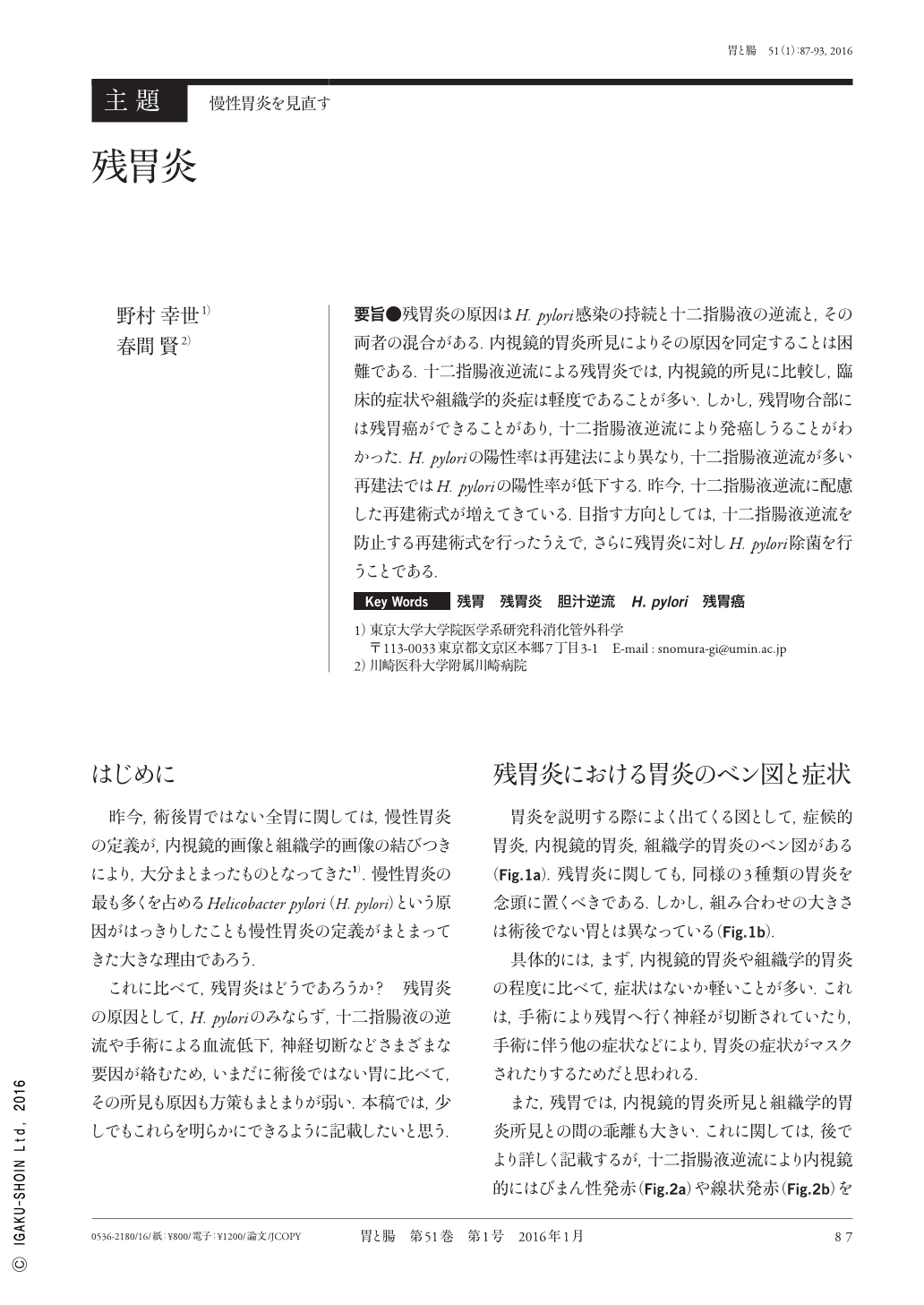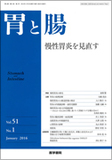Japanese
English
- 有料閲覧
- Abstract 文献概要
- 1ページ目 Look Inside
- 参考文献 Reference
要旨●残胃炎の原因はH. pylori感染の持続と十二指腸液の逆流と,その両者の混合がある.内視鏡的胃炎所見によりその原因を同定することは困難である.十二指腸液逆流による残胃炎では,内視鏡的所見に比較し,臨床的症状や組織学的炎症は軽度であることが多い.しかし,残胃吻合部には残胃癌ができることがあり,十二指腸液逆流により発癌しうることがわかった.H. pyloriの陽性率は再建法により異なり,十二指腸液逆流が多い再建法ではH. pyloriの陽性率が低下する.昨今,十二指腸液逆流に配慮した再建術式が増えてきている.目指す方向としては,十二指腸液逆流を防止する再建術式を行ったうえで,さらに残胃炎に対しH. pylori除菌を行うことである.
The causative origins of gastritis in gastric remnants are H. pylori(Helicobacter pylori)infection, duodenal content reflux, or a combination of both factors. It is difficult to identify the cause of gastritis in a gastric remnant with endoscopic observation. The clinical symptoms of gastritis in gastric remnant are usually less severe compared with those speculated by endoscopic gastritis caused by duodenal content reflux. However, gastric cancer sometimes develops in the anastomotic site of a gastric remnant, and duodenal content reflux could be a carcinogenic causative factor.
The positive rate of H. pylori in the gastric remnant differs depending on the reconstruction method used. The positive rate decreases in stomachs with duodenal content reflux. Recently, reconstruction methods that prevent duodenal content reflux have become popular. For best results, we should choose reconstruction methods that prevent duodenal content reflux and eradicate H. pylori infection.

Copyright © 2016, Igaku-Shoin Ltd. All rights reserved.


